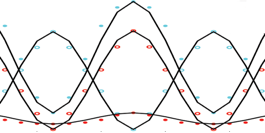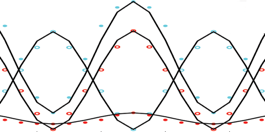Pnictide Gap Symmetry
The structure and symmetry of the superconducting gap in iron-based superconductors is a question of considerable debate, although it is generally believed that the pairing mechanism arises from Coulomb interactions that are enhanced at particular regions in the Fermi surface. Due to the complexity of the electronic structure, the low-energy degrees of freedom are composed of all five iron orbitals, resulting in multiple Fermi-surface sheets. Another consequence of the electronic structure is the possibility of an -wave superconducting gap, which could change the sign between Fermi-surface sheets, though superconductivity from repulsive interactions is generally associated with unconventional - or -wave gap symmetry.
In a detailed theoretical study appearing in Physical Review B, Saurabh Maiti at the University of Wisconsin, Madison, and his collaborators investigate the properties of -wave and -wave pairing as a function of hole- and electron-doping in iron-based superconductors by decomposing the full pairing interaction into contributions from scattering processes between different Fermi surfaces. They show that multiorbital interactions can be approximated by only two angular harmonics in the and channels. The key finding is that although the pairing states found in iron-based superconductors at different doping levels are qualitatively different, they can be accounted for within a single universal pairing scenario mediated by spin fluctuations. – Sarma Kancharla





